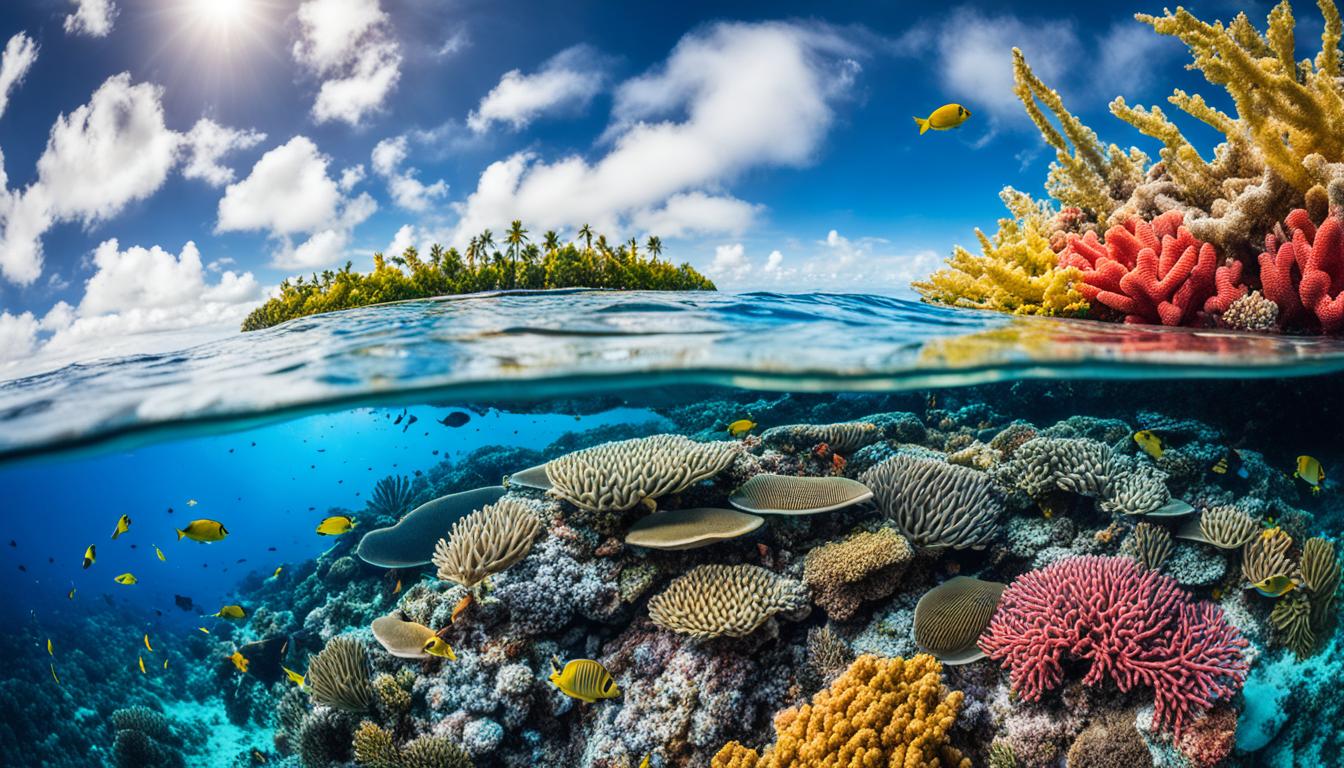Malta Biodiversity and the Built Environment
Did you know that Malta, the small archipelago in the Mediterranean, is home to an astonishing diversity of flora and fauna despite its compact size? The juxtaposition of urban development and thriving biodiversity in Malta is a testament to the intricate relationship between the built environment and the natural world.
Key Takeaways:
- Malta’s biodiversity is unique and diverse, making it a valuable ecological treasure.
- The built environment in Malta serves as habitat for various wildlife species.
- Conservation efforts and sustainable development are vital for safeguarding Malta’s biodiversity.
- Urban planning should consider green infrastructure and environmental policy to minimize the ecological impact.
- Biodiversity management plays a crucial role in maintaining a harmonious coexistence between humans and nature.
Plant Species in Malta
Malta is renowned for its rich flora and fauna, showcasing a remarkable variety of plant species. With approximately 1,200 flowering plants, the island boasts a vibrant botanical scene that contributes to its exceptional biodiversity.
Among these plant species, Malta is home to around 25 strict endemics, showcasing the uniqueness and ecological value of the local flora. These endemics play a crucial role in maintaining the delicate balance of the ecosystem and preserving Malta’s natural heritage.
Furthermore, Malta’s plant diversity is supported by a diverse macrofungal mycoflora, which aids in the growth and health of various plant species. The interconnectedness of fungi and plants creates a harmonious symbiotic relationship, enhancing the overall resilience of the ecosystem.
Woodland remnants in Malta serve as vital refuges for plant species and provide a conducive environment for soil biodiversity. These remnants play a crucial role in supporting plant species by nurturing the health of the soil, which in turn sustains the diverse range of flora and fauna found on the islands.
Key Points:
- Malta has approximately 1,200 species of flowering plants.
- Around 25 strict endemics contribute to Malta’s biodiversity.
- The diverse macrofungal mycoflora supports plant growth and health.
- Woodland remnants are crucial for soil biodiversity and provide a favorable environment for plant species.
“The beauty and diversity of Malta’s plant species are a testament to the country’s unique natural heritage.” – [Author’s Name]
Animal Species in Malta
Malta is renowned for its rich biodiversity, encompassing a diverse range of animal species. One notable aspect of this biodiversity is the abundance of insects found throughout the islands. While Malta may lack freshwater ecosystems, it compensates with a significant diversity of insects and other invertebrates.
In addition to the vast insect population, Malta is also home to various indigenous reptiles, showcasing the adaptability of different animal species in urban environments. These reptiles have successfully adapted to the challenges posed by urbanization, finding ways to thrive in their surroundings.
The bird species in Malta also deserve special mention, as they have exemplified their ability to adapt and coexist within urban environments. The islands provide a habitat that caters to the needs of different bird species, facilitating their continued presence and enabling a harmonious coexistence with humans.
Urban areas in Malta also offer refuge to several other animal species, such as mice, shrews, and bats. These creatures find solace and shelter within man-made structures, highlighting the unintended but valuable role of urban development in supporting biodiversity.
To illustrate the diverse animal species found in Malta, here is a visually engaging table presenting the different types of animals present:
| Animal Group | Examples |
|---|---|
| Insects | Butterflies, beetles, bees |
| Reptiles | Maltese wall lizard, snakes, turtles |
| Birds | Maltese Falcon, Yellow Billed Kite, Sparrows |
| Other Species | Mice, shrews, bats |
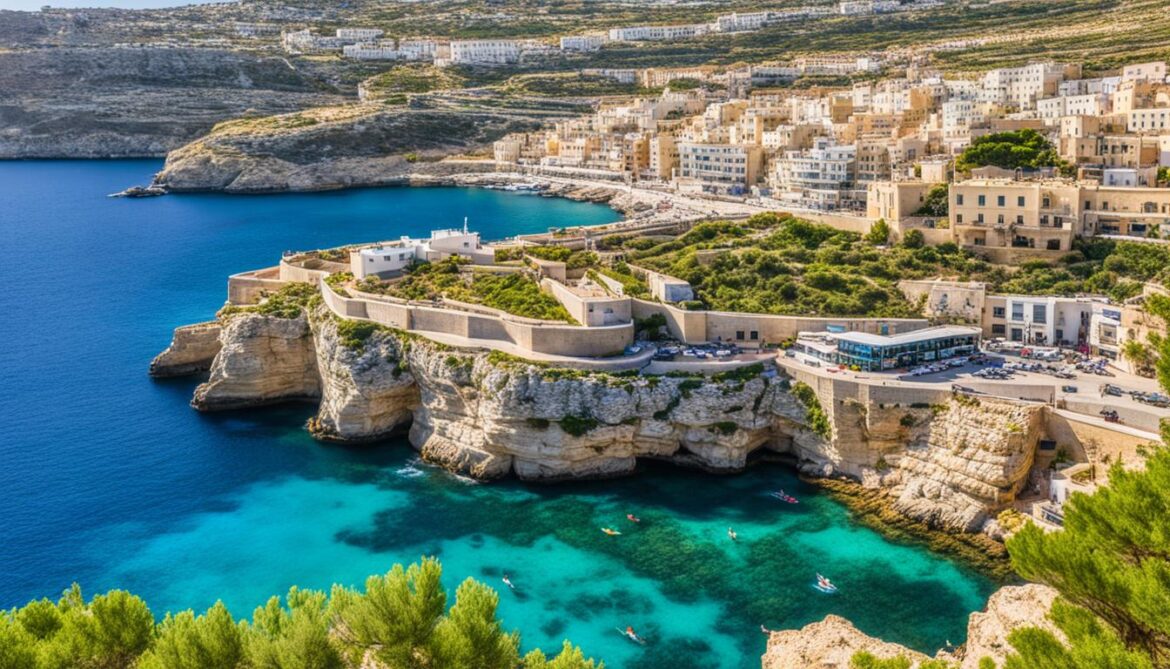
Threats to Biodiversity in Malta
Malta’s rich biodiversity faces numerous threats that have the potential to disrupt delicate ecosystems and endanger native species. These threats include habitat loss, the introduction of non-native species, pollution, and climate change. Each poses unique challenges that need to be addressed to safeguard Malta’s natural heritage for future generations.
Habitat Loss:
Habitat loss is a major concern due to the high population density and ongoing development in Malta. Urbanization and infrastructure projects lead to the destruction of natural habitats, reducing the available space and resources for native species. As habitats shrink, populations become fragmented, making it more difficult for species to thrive and maintain healthy populations.
Non-Native Species:
The introduction of non-native species can have devastating effects on local ecosystems. These species, often introduced accidentally or intentionally, can outcompete native species for resources, disrupt food chains, and alter the natural balance. They may have no natural predators, causing their populations to grow rapidly and further threaten the survival of native species.
Pollution:
Pollution originating from various sources, such as agriculture and urban development, poses a significant threat to biodiversity in Malta. Chemical pollutants, including pesticides and fertilizers, can contaminate soils and waterways, negatively impacting the health and reproductive capabilities of plant and animal species. Air pollution, resulting from emissions from vehicles, industries, and energy production, can also harm both terrestrial and marine ecosystems.
Climate Change:
Climate change is an escalating threat that impacts biodiversity on a global scale. Rising temperatures, changing precipitation patterns, and increased frequency of extreme weather events directly affect ecosystems and species distribution. For Malta, which is particularly susceptible to climate change impacts such as rising sea levels and increased desertification, these changes pose additional challenges for native and endemic species.
“The loss of biodiversity in Malta poses a significant risk to our ecosystems and overall environmental health. It is crucial that we take immediate action to address the threats and protect our unique natural heritage.” – Dr. Angelo Schembri, Environmental Scientist
According to a report by the Malta Environment and Resources Authority, urgent collaborative efforts are needed to mitigate these threats and promote biodiversity conservation. The report highlights the importance of sustainable land management practices, the creation of protected areas, and the implementation of policies that promote eco-friendly development.
| Threat | Impact on Biodiversity |
|---|---|
| Habitat Loss | Fragmentation, reduction of available resources, disruption of ecosystems |
| Non-Native Species | Competition with native species, alteration of food chains |
| Pollution | Contamination of soils and waterways, harm to plant and animal health |
| Climate Change | Altered species distribution, habitat loss, increased vulnerability |
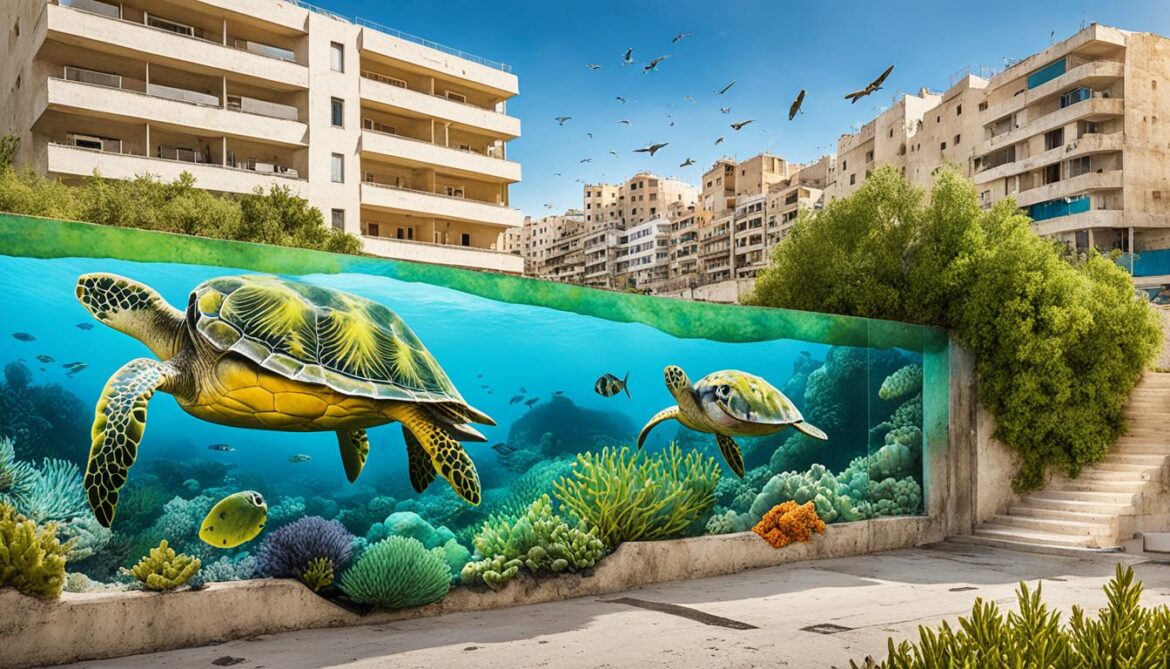
The combined efforts of governmental organizations, environmental agencies, and the public are essential in overcoming these threats and ensuring the preservation of Malta’s unique biodiversity. By raising awareness, implementing effective conservation strategies, and promoting sustainable practices, Malta can forge a path towards a harmonious coexistence between nature and development.
Conservation Efforts in Malta
Malta is dedicated to safeguarding its rich biodiversity through the implementation of the National Biodiversity Strategy and Action Plan (NBSAP). This comprehensive plan encompasses a range of conservation efforts aimed at protecting genetic resources and diversity, preserving species and habitats, establishing ecological networks of protected areas, promoting sustainable use of biological resources, addressing the impacts of climate change, and fostering pro-biodiversity businesses.
By integrating biodiversity considerations into decision-making processes, Malta is taking proactive steps towards achieving both national and international biodiversity targets. Collaboration with various stakeholders, including government agencies, environmental organizations, and local communities, further strengthens the effectiveness of conservation initiatives and ensures a holistic approach to biodiversity preservation.
Key Aspects of the National Biodiversity Strategy and Action Plan
- Genetic Resources and Diversity: Promoting the conservation and sustainable use of Malta’s genetic resources and preserving the diversity of its flora and fauna.
- Species and Habitats: Protecting and restoring endangered species and their habitats through targeted conservation measures.
- Ecological Networks of Protected Areas: Establishing a comprehensive network of protected areas to ensure the long-term conservation of ecologically important sites.
- Sustainable Use of Biological Resources: Encouraging sustainable practices in the use of biological resources, such as fishing, agriculture, and forestry, to minimize negative impacts on biodiversity.
- Climate Change: Addressing the challenges posed by climate change to biodiversity through adaptive management strategies and mitigation efforts.
- Pro-Biodiversity Businesses: Promoting the development of businesses that contribute to biodiversity conservation and sustainable land management.
“Conservation is not just the responsibility of the government; it is a collective effort that requires the active participation of individuals, communities, and organizations. Through the NBSAP, Malta is striving to create a more sustainable and biodiverse future for all.”
Protected areas play a crucial role in conservation efforts by providing safe havens for species and habitats. These designated areas, such as nature reserves, national parks, and marine protected areas, are essential for preserving biodiversity and promoting sustainable land management practices. Malta is actively working towards expanding its protected area network to ensure the long-term viability of its unique ecosystems and wildlife.
Protected Areas in Malta
| Name | Type | Location | Size |
|---|---|---|---|
| Għadira Nature Reserve | Wetland reserve | Mellieħa | 6.5 hectares |
| Park ta’ Qali | Natural park | Ta’ Qali | Approximately 50 hectares |
| Dwejra Nature Park | Coastal reserve | Gozo | Approximately 10 hectares |
These protected areas not only safeguard the biodiversity of Malta but also provide opportunities for education, research, and ecotourism. Visitors can explore the unique ecosystems, observe rare plant and animal species, and gain a deeper appreciation for the importance of conservation.
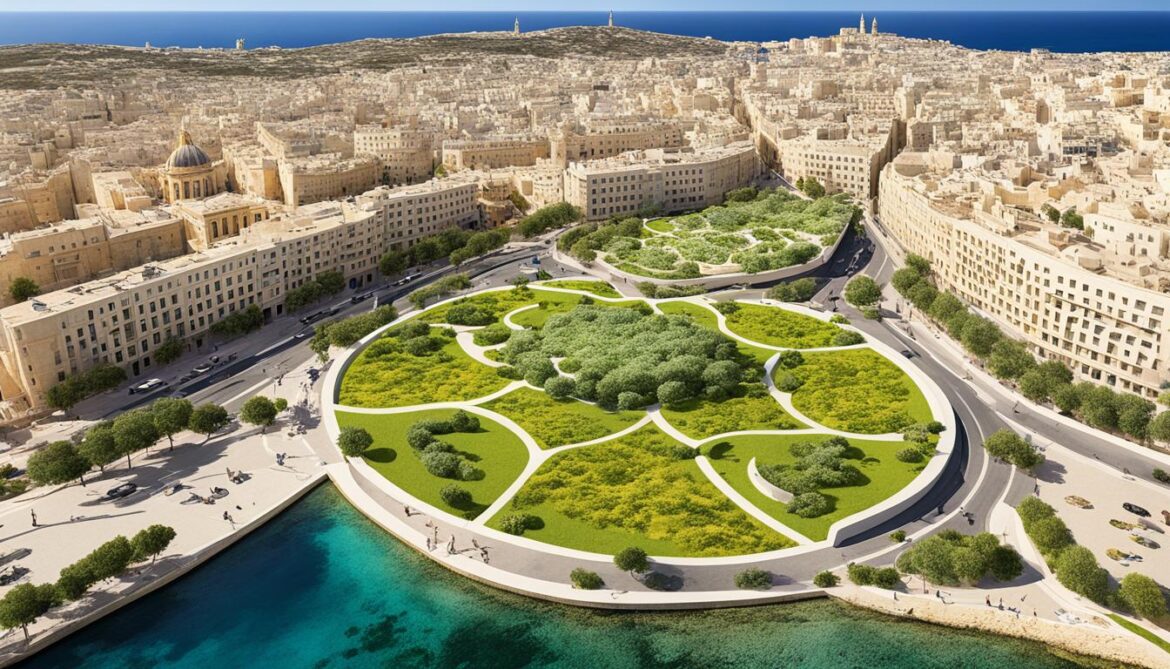
In addition to protected areas, sustainable land management practices are essential for the long-term preservation of Malta’s biodiversity. By adopting sustainable approaches to agriculture, forestry, and urban development, the ecological integrity of the land can be maintained while supporting human needs. Sustainable land management techniques, such as agroforestry, reforestation, and green infrastructure, promote the coexistence of human activities and biodiversity conservation.
Through its conservation efforts, Malta is striving to create a harmonious balance between development and biodiversity conservation. By implementing the NBSAP, protecting and expanding protected areas, and promoting sustainable land management practices, Malta is taking significant steps towards preserving its unique natural heritage for future generations.
Endangered Species in Malta
Urbanization and agricultural activities in Malta have led to the critical endangerment of several species due to habitat loss. These include the Maltese wall lizard, painted frog, Maltese freshwater crab, and various plant species.
Conservation efforts are underway to protect and conserve these endangered species. The National Biodiversity Strategy and Action Plan (NBSAP) outlines measures to safeguard Malta’s biodiversity. By implementing these initiatives, Malta aims to mitigate the threats posed by habitat loss and ensure the survival of these vulnerable species.
| Endangered Species | Threats | Conservation Efforts |
|---|---|---|
| Maltese Wall Lizard | Habitat loss, fragmentation | Protection of natural habitats, habitat restoration |
| Painted Frog | Habitat loss, pollution | Creation of protected areas, raising public awareness |
| Maltese Freshwater Crab | Destruction of wetland habitats | Wetland restoration, captive breeding programs |
| Various Plant Species | Habitat loss, invasive species | Conservation of natural habitats, seed banking |
Through targeted conservation efforts, Malta aims to preserve its unique biodiversity and contribute to global conservation initiatives.

The Impact of Alien Species and Pollution on Biodiversity
The introduction of alien species poses a significant threat to Malta’s biodiversity. These invasive species, not native to the island, can outcompete native species and disrupt ecosystems. The resulting disruption can lead to a decrease in biodiversity as native species struggle to survive. It is crucial to implement conservation measures to mitigate the negative impacts of alien species on Malta’s unique natural environment.
Another major threat to biodiversity in Malta is pollution. Water and air pollution can have detrimental effects on flora and fauna, further exacerbating the decline in biodiversity. Pollution not only directly harms plants and animals but also damages their habitats, leading to habitat loss and degradation.
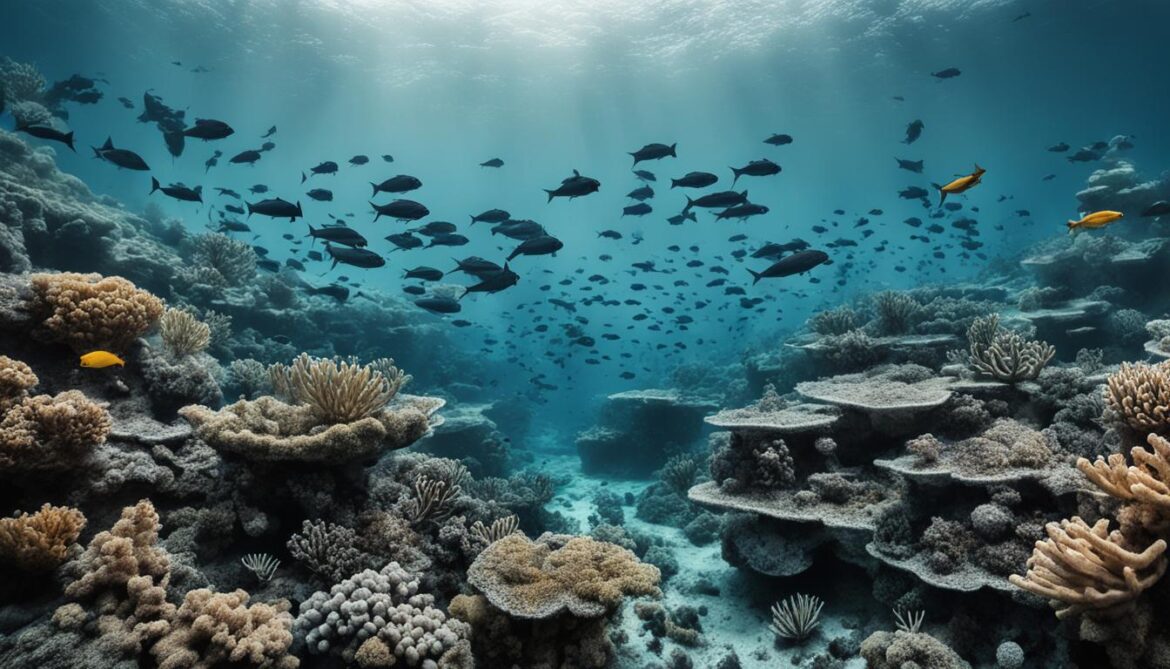
“The introduction of alien species and pollution are significant factors contributing to the loss of biodiversity. It is essential to address these issues through effective conservation measures to protect Malta’s unique natural environment.” – Dr. Maria Borg, Environmental Conservationist
To protect biodiversity, it is crucial to implement conservation measures that focus on managing alien species and reducing pollution. These measures can include stricter regulations on the introduction of non-native species, monitoring and controlling pollution sources, and promoting sustainable practices in various sectors.
Conservation Measures for Alien Species:
- Implementing strict regulations on the introduction of non-native species
- Monitoring and controlling the spread of invasive alien species
- Collaborating with international organizations and experts to share knowledge and best practices
Conservation Measures for Pollution:
- Implementing stricter regulations and enforcement to reduce water pollution
- Encouraging the use of sustainable agricultural practices to minimize pollution from fertilizers and pesticides
- Promoting renewable energy sources and reducing emissions to minimize air pollution
In conclusion, the impact of alien species and pollution on biodiversity in Malta cannot be underestimated. By implementing conservation measures to address these threats and raising awareness about their impacts, we can protect Malta’s unique natural environment and ensure a sustainable future for generations to come.
The Role of Climate Change in Biodiversity Loss
Climate change plays a significant role in the loss of biodiversity in Malta and around the world. The rising temperatures, changing rainfall patterns, and extreme weather events directly impact ecosystems and species diversity. These changes pose a particular threat to the Maltese Islands, which are highly vulnerable to the impacts of climate change, including rising sea levels and higher temperatures.
“Climate change is the greatest long-term threat to global biodiversity. Its impacts are already being felt around the world, with ecosystems and species facing increased risks of extinction.”
Adaptation and mitigation efforts are crucial in minimizing the impacts of climate change and preserving biodiversity. The Maltese government, in collaboration with various stakeholders, is taking steps to address these challenges. Efforts are being made to enhance the resilience of ecosystems and support the adaptation of species to the changing climate.
For example, the planting of climate-resilient flora and the restoration of degraded habitats can help ecosystems adapt and provide suitable habitats for diverse species. Additionally, promoting sustainable land use practices and incorporating climate change considerations into biodiversity management plans can contribute to both adaptation and mitigation efforts.
It is important to recognize that addressing climate change requires a global effort. International cooperation and commitment to reducing greenhouse gas emissions and transitioning to renewable energy sources are imperative for minimizing the impacts on biodiversity.
The Impacts of Climate Change on Biodiversity
Climate change affects biodiversity in various ways:
- Shift in species distribution: Rising temperatures force some species to move to more suitable habitats, while others may struggle to adapt and face a higher risk of extinction.
- Loss of habitat: Climate change alters ecosystems, leading to the loss of vital habitats for many species.
- Changes in phenology: The timing of important biological events, such as flowering and migration, may be disrupted, affecting the interactions between species.
- Increased vulnerability to diseases: Climate change can weaken the health of species, making them more susceptible to diseases and parasites.
Adaptation and Mitigation Efforts
Adapting and mitigating the impacts of climate change on biodiversity require concerted efforts at various levels:
- Conservation and restoration: Protecting and restoring natural habitats can enhance ecosystem resilience and provide refuges for species.
- Sustainable land management: Promoting sustainable agricultural practices and minimizing habitat fragmentation can help preserve biodiversity and reduce greenhouse gas emissions.
- Raising awareness: Educating the public about the importance of biodiversity and climate change can foster individual and collective action to address these challenges.
- International collaboration: Collaborating with other countries on research, sharing best practices, and establishing conservation networks can facilitate effective conservation and management of biodiversity in the face of climate change.
By implementing adaptation and mitigation measures, Malta can contribute to global efforts in tackling climate change and preserving its unique biodiversity.

Cross-Linkages to National and Global Biodiversity Targets
Malta’s National Biodiversity Strategy and Action Plan (NBSAP) plays a crucial role in aligning the country’s biodiversity conservation efforts with national and global targets. One such target is the full implementation of the Birds and Habitats Directives, which aim to protect and conserve important bird species and habitats across Europe. By adhering to these directives, Malta contributes to the broader European and global biodiversity goals.
The NBSAP focuses on the cross-linkages between biodiversity and various sectors, emphasizing the importance of integrating biodiversity considerations into decision-making processes. This approach ensures that sustainable practices are adopted in areas such as urban planning, agriculture, tourism, and infrastructure development, promoting a harmonious coexistence between human activities and nature.
The strategy recognizes the significance of protected areas in conserving biodiversity. These designated areas serve as sanctuaries for endemic and endangered species, where their habitats are preserved and managed sustainably. By safeguarding these key areas, Malta aims to maintain and enhance the ecological connectivity required for species to thrive and for ecological processes to function effectively.
Furthermore, the NBSAP emphasizes the importance of sustainable production and consumption practices. By promoting responsible resource use and minimizing the environmental footprint of economic activities, Malta strives to achieve a more sustainable and resilient society. This includes adopting practices that reduce pollution, minimize waste generation, and promote the use of renewable resources.
Stakeholder awareness and enforcement are critical elements in achieving the objectives outlined in the NBSAP. Collaboration with local communities, businesses, NGOs, and government agencies is essential in ensuring the successful implementation of conservation measures and enforcement of biodiversity-related regulations. By fostering partnerships and engaging stakeholders, Malta aims to create a shared responsibility in conserving its unique biodiversity.
By working towards national and global biodiversity targets, Malta not only preserves its natural heritage but also contributes to the global effort in safeguarding biodiversity. Through the proactive implementation of the NBSAP, Malta strives to create a sustainable future where the built environment and biodiversity coexist harmoniously, ensuring the well-being of both current and future generations.
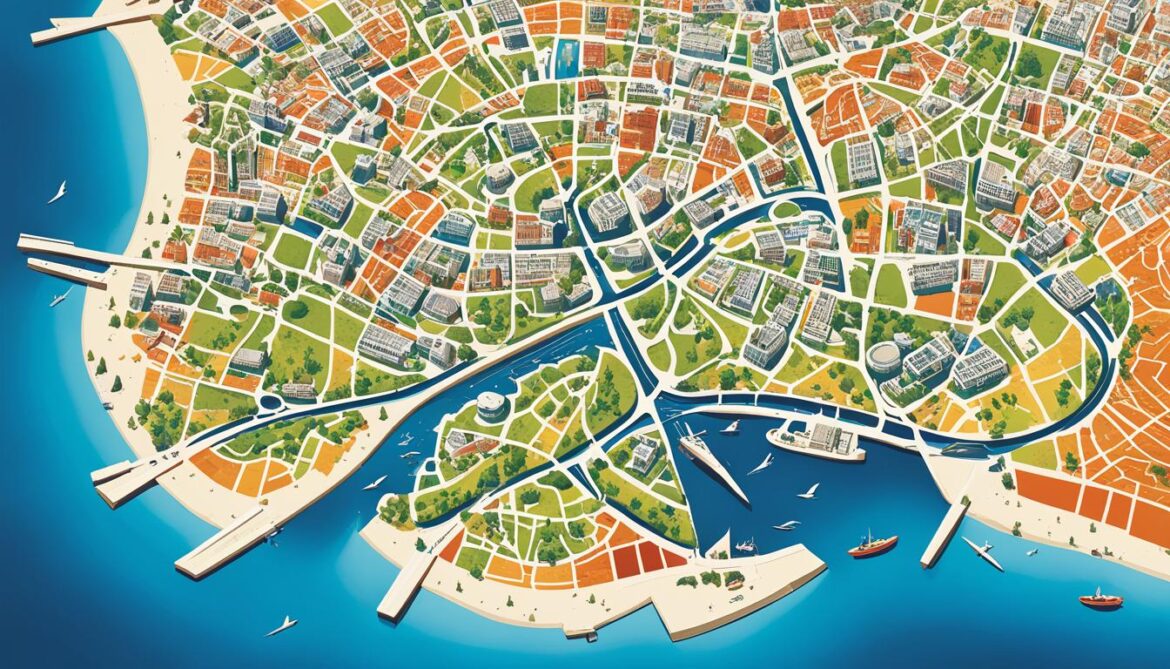
Conclusion
Preserving Malta’s biodiversity is of utmost importance for maintaining the delicate ecological balance and ensuring a sustainable future. The diverse flora and fauna, along with the unique natural habitats, serve as a testament to the country’s rich natural heritage. Through the diligent implementation of the National Biodiversity Strategy and Action Plan, Malta is actively engaged in comprehensive conservation efforts aimed at protecting and nurturing its invaluable biodiversity.
The National Biodiversity Strategy and Action Plan (NBSAP) plays a pivotal role in guiding Malta’s conservation initiatives. By encouraging collaboration and fostering mutual understanding among various stakeholders, including policymakers, researchers, and local communities, Malta aims to develop and implement effective strategies that safeguard the biodiversity of the built environment. These efforts are vital for preserving the natural ecosystems, protecting endangered species, and promoting a sustainable future for generations to come.
As Malta progresses towards a sustainable future, the conservation of its biodiversity remains at the core of environmental decision-making. By recognizing the intricate link between biodiversity and the built environment, Malta can capitalize on its unique natural resources and promote innovative approaches to sustainable development. Through advocacy, awareness-raising, and the integration of biodiversity considerations into urban planning and policy-making, Malta is working towards creating a harmonious coexistence between human activities and the natural world, thus ensuring a resilient and sustainable future.
FAQ
What is the significance of biodiversity in Malta?
Biodiversity in Malta is significant as it contributes to the unique natural heritage of the country. It supports diverse plant and animal species and provides ecological balance.
How many plant species are there in Malta?
Malta is home to approximately 1,200 species of flowering plants, including around 25 strict endemics.
What animal species can be found in Malta?
Malta is known for its diverse insect population, as well as indigenous reptiles and various bird species that have adapted to urban environments.
What are the threats to biodiversity in Malta?
The major threats to biodiversity in Malta include habitat loss, the introduction of non-native species, pollution, climate change, and biological invasions.
What conservation efforts are in place in Malta?
Malta has implemented the National Biodiversity Strategy and Action Plan (NBSAP), which focuses on various aspects of conservation, including protected areas and sustainable land management.
Which species are endangered in Malta?
Species such as the Maltese wall lizard, painted frog, and various plant species are critically endangered in Malta due to habitat loss caused by urbanization and agricultural activities.
What is the impact of alien species and pollution on biodiversity?
Alien species can disrupt ecosystems and outcompete native species, while pollution from water and air sources has detrimental effects on flora and fauna in Malta.
How does climate change contribute to biodiversity loss in Malta?
Climate change affects ecosystems and species diversity through rising temperatures, changing rainfall patterns, and extreme weather events, making adaptation and mitigation efforts crucial for biodiversity preservation in Malta.
How does Malta contribute to national and global biodiversity targets?
Malta aligns with national and global biodiversity targets by implementing the NBSAP and focusing on sustainable practices, protected areas, and stakeholder awareness and enforcement.
Why is preserving Malta’s biodiversity important?
Preserving Malta’s biodiversity is important for ecological balance and ensuring a sustainable future, as it contributes to the country’s natural heritage and supports diverse flora and fauna.




